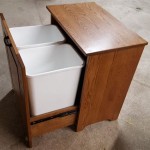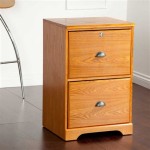Do You Have To Sand Unfinished Cabinets Before Staining?
When it comes to refinishing unfinished cabinets, sanding is often considered an essential step in the preparation process. However, the necessity of sanding depends on several factors such as the condition of the cabinets, the type of stain being used, and the desired finish.
Benefits of Sanding
Sanding unfinished cabinets offers several benefits, including:
- Smoothening the surface: Sanding removes any rough spots or imperfections on the wood's surface, creating a smooth and even base for staining.
- Removing existing finish: If the cabinets have previously been finished, sanding helps remove the old finish, allowing the new stain to penetrate the wood properly.
- Opening the wood pores: Sanding lightly opens up the wood's pores, allowing the stain to penetrate deeper and resulting in a more vibrant and even color.
When Sanding Is Not Necessary
In some cases, sanding unfinished cabinets before staining may not be necessary, such as:
- Cabinets in excellent condition: If the cabinets are relatively new and have a smooth and blemish-free surface, sanding may not be necessary.
- Using a penetrating stain: Penetrating stains do not require a sanded surface to adhere properly. They penetrate the wood deeply, regardless of its texture.
- Seeking a rustic or distressed finish: If you desire a rustic or distressed finish, sanding may not be necessary as it can preserve the natural character and imperfections of the wood.
How to Sand Unfinished Cabinets
If you decide to sand your unfinished cabinets, follow these steps:
- Choose the right sandpaper: Use fine-grit sandpaper (120-150 grit) for sanding unfinished cabinets.
- Sand in the direction of the grain: Always sand parallel to the wood grain to avoid cross-grain scratches.
- Use a sanding block or orbital sander: These tools provide a more even sanding surface compared to hand sanding.
- Apply light pressure: Avoid sanding too vigorously, as this can remove too much wood and create unevenness.
- Remove dust: Use a vacuum cleaner or tack cloth to remove all dust and debris before staining.
Conclusion
Whether or not to sand unfinished cabinets before staining depends on the specific circumstances of your project. Consider the condition of the cabinets, the type of stain you plan to use, and the desired finish. By carefully evaluating these factors, you can make an informed decision and achieve the best possible results for your refinishing project.

How To Stain Unfinished Cabinets Painting By The Penny

How To Stain Unfinished Cabinets Painting By The Penny

How To Stain Unfinished Cabinets Painting By The Penny

How To Stain Oak Cabinetry Tutorial The Kim Six Fix

How To Stain Unfinished Cabinets Painting By The Penny

Staining Your Wood Cabinets Darker Young House Love

How To Stain Unfinished Cabinets Painting By The Penny

How To Stain Unfinished Cabinets Painting By The Penny

How To Finish Wood Cabinets Cabinet Doors N More

Staining Your Wood Cabinets Darker Young House Love
Related Posts








